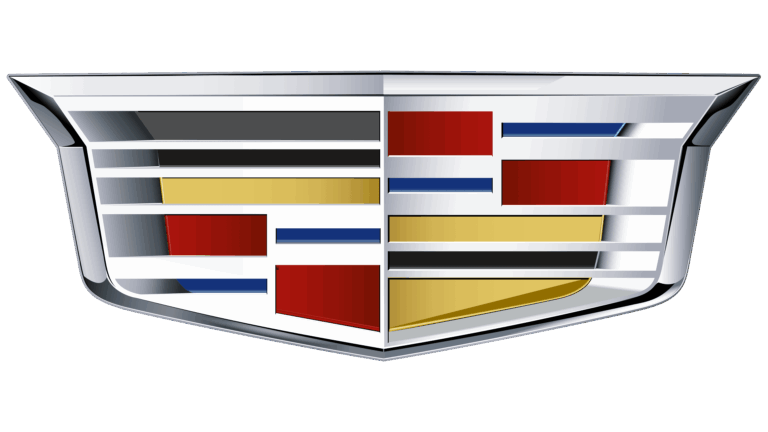Buy Brand New Car Online: Navigating the Digital Road to Your Next Vehicle
Buy Brand New Car Online: Navigating the Digital Road to Your Next Vehicle cars.truckstrend.com
The automotive industry is undergoing a significant transformation, and at its forefront is the burgeoning trend of buying brand new cars online. Gone are the days when the only path to a new vehicle involved hours spent at a physical dealership, navigating showrooms, and engaging in often-dreaded price negotiations. Today, the internet has emerged as a powerful platform, empowering consumers to research, configure, finance, and even finalize the purchase of their dream car from the comfort of their homes. This shift isn’t just about convenience; it’s about transparency, wider selection, and a streamlined process that caters to the modern, digitally-savvy consumer.
Buying a brand new car online means leveraging websites from manufacturers, online dealerships, and dedicated automotive e-commerce platforms to complete most, if not all, aspects of the car buying journey. From browsing virtual inventories and comparing models to applying for financing, appraising trade-ins, and scheduling home delivery, the entire process can now be managed with a few clicks. This comprehensive guide will delve into the intricacies of buying a brand new car online, offering insights, practical advice, and a clear roadmap for a successful digital purchase.
Buy Brand New Car Online: Navigating the Digital Road to Your Next Vehicle
The Paradigm Shift: Why Buy a Car Online?
The allure of purchasing a new car online stems from a multitude of benefits that address common pain points of traditional car buying.
- Unparalleled Convenience: The most obvious advantage is the ability to shop 24/7, from anywhere with an internet connection. Whether it’s during a lunch break, late at night, or on a lazy weekend, you have access to a vast "digital showroom" without the pressure of a salesperson.
- Wider Selection: Online platforms often provide access to a national inventory, far exceeding what any single physical dealership can stock. This means you’re more likely to find the exact make, model, trim, color, and options you desire, without compromising.
- Enhanced Transparency: Online pricing models tend to be more upfront, with less room for hidden fees or last-minute surprises. Many platforms offer "no-haggle" pricing, allowing you to see the exact cost without the stress of negotiation. This transparency extends to financing options, where rates and terms are often clearly laid out.
- Time-Saving Efficiency: The traditional car buying process can be incredibly time-consuming. Online purchasing drastically cuts down on hours spent traveling to dealerships, waiting for paperwork, and negotiating prices, freeing up valuable time.
- Reduced Pressure: Without a salesperson looking over your shoulder, you can take your time to research, compare, and make an informed decision without feeling rushed or pressured into a sale.
- Customization and Personalization: Online configurators allow you to build your ideal car from the ground up, selecting every feature, package, and accessory, and seeing the immediate impact on the price.

Navigating the Digital Showroom: How to Buy a Brand New Car Online
The process of buying a new car online is surprisingly straightforward, typically following these steps:
- Thorough Research & Budgeting: Begin by defining your needs (type of car, features, size) and establishing a realistic budget. Utilize online resources like automotive review sites, comparison tools, and manufacturer websites to narrow down your choices. Research MSRPs, common options, and potential running costs.
- Choosing Your Online Platform: Decide where to buy. Options include:
- Manufacturer Websites: Many brands (e.g., Tesla, Rivian, Lucid, and increasingly traditional brands like Ford, GM, etc.) allow direct online ordering and configuration.
- Online Dealerships/Retailers: Companies like Carvana, Vroom, and some large dealership groups have robust online platforms for new car sales.
- Aggregator Sites: While often focused on used cars, some sites aggregate new car inventory from various dealerships, allowing you to get quotes.

- Configuring Your Dream Car: Once on your chosen platform, use the online configurator to build your desired vehicle. Select the model, trim level, engine, transmission, exterior color, interior materials, packages, and individual options. As you add items, the total price updates in real-time.
- Obtaining a Quote & Exploring Financing: After configuring your car, request a detailed quote. Most platforms will allow you to apply for financing directly online. Provide necessary financial information, and you’ll typically receive pre-approval or an initial offer within minutes. Compare these rates with offers from external lenders (banks, credit unions) to ensure you get the best APR.
- Trade-in Evaluation (if applicable): If you have a car to trade in, most online platforms offer a digital appraisal tool. You’ll input details about your vehicle (VIN, mileage, condition, features), and they’ll provide an estimated value. This is usually subject to a final physical inspection upon delivery or pickup.
- Reviewing & Finalizing the Purchase: Carefully review all details of your order, including the car’s specifications, final price (including taxes, fees, and destination charges), financing terms, and trade-in value. Most platforms use digital contracts and e-signatures, making the paperwork process efficient.
- Delivery & Inspection: Once the purchase is complete, schedule your delivery. Depending on the retailer, this could be directly to your home or a local pickup point. Upon delivery, thoroughly inspect the vehicle for any damage or discrepancies before signing the final acceptance documents. Verify all features and options are present.

Key Considerations Before Clicking ‘Buy’
While convenient, buying a car online requires careful attention to certain details:
- The Test Drive Dilemma: One of the biggest challenges is the inability to physically test drive the exact vehicle you’re buying. Some online retailers offer a "test drive at home" option or a short return window. For traditional brands, you might visit a local dealership for a test drive, then return online for the purchase. Virtual tours and detailed specifications can help, but nothing replaces the feel of the road.
- Financing Transparency and Options: While online financing can be competitive, always compare the Annual Percentage Rate (APR) and terms from the online platform with pre-approvals from your bank or credit union. Understand all associated fees.
- Trade-in Accuracy: Online trade-in appraisals are estimates. The final value depends on a physical inspection. Be honest about your car’s condition to avoid last-minute deductions.
- Warranty and After-Sales Service: Confirm how warranty claims and routine maintenance will be handled. For online-only brands (e.g., Tesla), service centers are specific. For traditional brands, ensure your local dealership will honor the warranty and provide service for a car bought online.
- Return Policies: This is crucial. Understand the return window (e.g., 7 days, 150 miles), any restocking fees, and the conditions under which a return is accepted. A robust return policy offers peace of mind.
- Registration, Taxes, and Fees: Clarify how sales tax, registration, and title fees will be handled. Many online retailers will collect these and manage the process for you, but ensure they are clearly itemized in your total cost.
- Security and Reputability: Only use reputable and secure websites. Look for "https://" in the URL and read reviews of the online retailer. Be wary of deals that seem too good to be true.
Overcoming Challenges & Maximizing Your Online Purchase
- Lack of Physical Interaction: Compensate by watching extensive video reviews, reading detailed spec sheets, and if possible, visiting a local dealership to see the model in person, even if you don’t buy from them.
- Delivery Logistics: Understand delivery timelines, costs (if any), and what to do if the car arrives damaged. Take photos before and during delivery.
- Trust and Transparency: Stick to well-known platforms. Read customer reviews, check their Better Business Bureau ratings, and ensure all communication is clear and documented.
- Negotiation Limitations: While "no-haggle" pricing means less negotiation, it also means less stress. Focus on getting the best value through transparent pricing rather than trying to chip away at the MSRP.
- Documentation Verification: Even with e-signatures, carefully review every document. Ensure the VIN matches, all figures are correct, and you understand all terms and conditions before signing.
Tips for a Smooth Online Car Buying Experience
- Do Your Homework: Research is paramount. The more you know about the car and the buying process, the more confident you’ll be.
- Get Pre-Approved for Financing: Secure financing from an outside lender before you even look at cars. This gives you leverage and a benchmark for comparison against the online retailer’s offers.
- Understand the Return Policy: Know the terms inside and out. It’s your safety net.
- Inspect Upon Delivery: Take your time. Check for scratches, dents, proper functionality of lights, windows, and infotainment. Don’t be afraid to refuse delivery if there’s significant damage.
- Ask Questions: Don’t hesitate to contact customer service via chat, email, or phone for any uncertainties. A reputable company will be happy to assist.
- Leverage Online Tools: Use payment calculators, comparison tools, and virtual configurators to their fullest extent.
Price Breakdown & Cost Considerations for Buying Brand New Car Online
Understanding the complete cost structure is vital when buying a car online. While the convenience is high, the overall price involves several components, often presented with greater transparency than traditional methods.
| Cost/Factor Category | Description | Online Purchase Implications | Traditional Purchase Implications |
|---|---|---|---|
| MSRP (Manufacturer’s Suggested Retail Price) | The recommended base price set by the car manufacturer for a specific model and trim level. | Often displayed prominently as the starting point. Online platforms typically offer this price or a pre-determined discount. Less room for negotiation below this due to fixed pricing. | The starting point for negotiation. Dealers may mark up or down. Can be a point of significant negotiation, often leading to variability in final price. |
| Optional Features & Packages | Additional features (e.g., sunroof, premium audio, advanced safety systems) or bundled groups of options (e.g., technology package, convenience package). | Clearly itemized and added to the MSRP during the online configuration process. The final price updates instantly, showing the exact cost of each add-on. | Similar, but may be presented as "dealer add-ons" or bundled in ways that are less transparent or harder to unbundle. Negotiation on these might be possible. |
| Destination/Delivery Charge | A non-negotiable fee charged by the manufacturer to transport the vehicle from the factory to the dealership or delivery hub. | Almost always included in the final online price. It’s a standard fee and is generally consistent across all buyers of the same model. | Same non-negotiable fee. It’s often included in the "out-the-door" price but might not be explicitly highlighted until later in the process. |
| Documentation Fees (Doc Fees) | Administrative fees charged by the dealership or online retailer for processing paperwork, title, and registration. | Can vary by state and online retailer. Should be disclosed upfront in the detailed price breakdown. Some states cap these fees. | Varies widely by dealership and state. Often a significant, non-negotiable fee that can sometimes be a point of contention during negotiation. |
| Sales Tax | State and local taxes levied on the purchase price of the vehicle, based on the buyer’s residence. | Calculated precisely based on your delivery address and state’s tax laws. Automatically added to the total cost before checkout. Often collected by the online retailer. | Same calculation, done by the dealership based on your residence. Collected by the dealership and remitted to the state. |
| Registration & Tag Fees | Fees for vehicle title, license plates, and annual registration with the Department of Motor Vehicles (DMV) or equivalent state agency. | Handled by the online retailer or a third-party service, often included in the total and streamlined for the buyer. The car often arrives with temporary tags. | Handled by the dealership. Fees are passed directly to the buyer. You may receive temporary tags and then your permanent ones by mail. |
| Financing Costs (APR, Interest) | The cost of borrowing money if you finance the purchase, expressed as an Annual Percentage Rate (APR) and total interest paid over the loan term. | Online lenders (both internal to the platform and external) often offer competitive rates with transparent APR disclosure. Pre-approval processes are common and efficient. | Negotiated with the dealership’s finance department. Rates can sometimes be marked up by the dealer from the wholesale rate they receive. More room for negotiation here. |
| Trade-in Value | The amount credited for your old car towards the new purchase. | Online appraisal tools provide estimates based on condition inputs. Final value contingent on physical inspection upon delivery. May be less negotiable than in person. | Negotiated with the dealer. Value can be influenced by the new car purchase price. More back-and-forth negotiation is typical. |
| Delivery Fee (Home Delivery) | An additional fee specifically for transporting the new car directly to your home or a specified location. | Common for online purchases. Can be an additional charge depending on distance, the retailer’s policy, and the car’s origin. Sometimes waived as a promotional offer. | Not applicable; you typically pick up from the dealership. Special arrangements for delivery are rare and usually at an extra cost. |
| Pre-paid Maintenance/Extended Warranties | Optional service contracts, maintenance plans, or warranty extensions beyond the manufacturer’s standard warranty. | Clearly presented as add-ons during the online configuration or checkout process, allowing you to easily accept or decline. | Often presented during the finance office "upsell" phase, sometimes with high-pressure tactics. |
| Negotiation Potential | The ability to negotiate the final price of the vehicle, including MSRP, trade-in, and add-ons. | Generally lower or non-existent, especially with fixed-pricing models. The focus is on transparency and convenience, with the price being the price. | Significant potential for negotiation on MSRP, trade-in value, and financing rates. Can lead to a lower final price if you’re skilled at negotiation. |
| Transparency | The clarity and upfront nature of all costs involved in the purchase. | High transparency. All costs are typically itemized and displayed before the final checkout, allowing for a clear understanding of the "out-the-door" price. | Can be less transparent. Fees may be added or discussed later in the process, making it harder to get a complete picture upfront. |
Conclusion: The Future is Online
Buying a brand new car online represents a significant evolution in automotive retail. It offers unparalleled convenience, a wider selection, and a level of pricing transparency that traditional dealerships are now striving to match. While it may lack the immediate gratification of a physical test drive, the benefits of efficiency, reduced pressure, and streamlined processes make it an increasingly attractive option for modern consumers.
As technology continues to advance and consumer preferences shift, the digital showroom will only become more sophisticated and prevalent. By understanding the process, being aware of key considerations, and leveraging the available tools, consumers can confidently navigate the digital road to their next brand new car, enjoying a purchase experience that is as exciting as the vehicle itself. The future of car buying is here, and it’s just a click away.
Frequently Asked Questions (FAQ) about Buying Brand New Car Online
Q1: Is it safe to buy a brand new car online?
A1: Yes, it is generally safe, provided you use reputable platforms like manufacturer’s official websites, established online dealerships (e.g., Carvana, Vroom), or well-known dealership groups with robust online presences. Always check for secure payment methods (https://), read reviews, and verify the company’s credentials.
Q2: Can I test drive a car if I’m buying it online?
A2: It varies. Some online retailers offer a short "test drive at home" period or a generous return policy. For traditional brands, you might visit a local dealership to test drive the model you’re interested in, then return to the online platform for the actual purchase. Virtual tours and detailed specifications can also help.
Q3: How does financing work when buying a car online?
A3: Most online platforms offer direct financing applications, allowing you to get pre-approved or receive loan offers quickly. You’ll typically provide financial information digitally, and they’ll present you with APRs and terms. It’s always advisable to get pre-approved by your bank or credit union beforehand to compare rates and ensure you get the best deal.
Q4: What about my trade-in vehicle?
A4: Online retailers usually have appraisal tools where you input your car’s details (VIN, mileage, condition, features). They’ll provide an estimated trade-in value, which is usually contingent on a final physical inspection upon delivery of your new car. Be honest about your car’s condition to avoid surprises.
Q5: What if I don’t like the car after it’s delivered? Can I return it?
A5: Many reputable online car retailers offer a return policy or a "cooling-off" period (e.g., 7 days or 150 miles). It’s crucial to thoroughly read and understand the specific return policy of the retailer before purchase, including any conditions, mileage limits, or potential restocking fees.
Q6: How is vehicle registration and titling handled when buying online?
A6: In most cases, the online retailer or a third-party service they partner with will handle the registration and titling process for you. They will collect the necessary taxes and fees during your purchase and then submit the paperwork to your state’s DMV. You’ll often receive temporary tags with your delivery, and permanent plates and registration will be mailed to you later.
Q7: Are cars cheaper when bought online compared to a traditional dealership?
A7: Not necessarily "cheaper," but often more transparent in pricing. Many online platforms operate on a "no-haggle" or fixed-price model, which means the price you see is the price you pay, often reflecting competitive market pricing. While you might not negotiate down from the MSRP, you also avoid the stress and potential markups of traditional negotiation. The overall value often comes from convenience, time saved, and transparency.
Q8: Do I still get a manufacturer’s warranty when buying a new car online?
A8: Absolutely. A brand new car purchased online comes with the full manufacturer’s warranty, just like a car bought from a physical dealership. For traditional brands, any authorized dealership can perform warranty service. For online-only brands (like Tesla), service is typically handled through their dedicated service centers.





